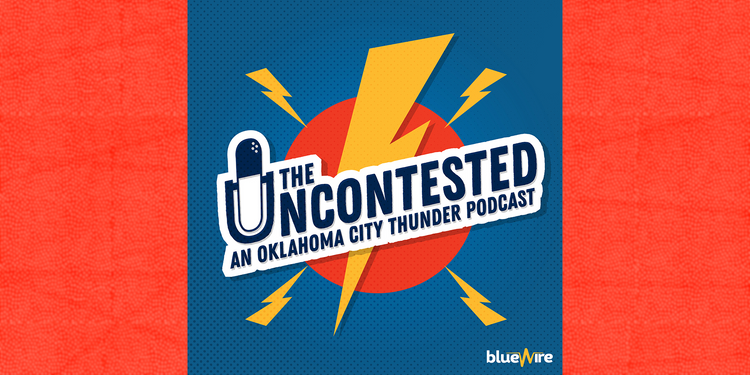What’s Wrong with the Thunder Offense?

Despite a perceived abundance of firepower, the Oklahoma City Thunder ranks 19th in the NBA in scoring offense. At 104.1 points per game, the Thunder trails teams like the Knicks, Magic, Suns, and others, but has been buoyed by its ability to stifle opponents defensively. Although the team was expected to/continues to be a defense-oriented bunch in the short term, the long-awaited materialization of the Thunder’s final form won’t come until the offense catches up. This begs the question:
What, exactly, is wrong with it?
The question in itself is difficult to answer, as there’s a number of issues that can arise on a game-to-game basis. Maybe Russell Westbrook shoots 30 times and derails the game plan. Maybe Carmelo Anthony reverts to mid-range isolation ball and jab-steps his way to defeat. Perhaps, even, Paul George disappears into the infinite abyss and fails to make any sort of real imprint. All of these things can happen on any given night and throw a wrench in the offensive system. We’ve seen cases of each.
But when you take Oklahoma City’s 44 games thus far and mash them together, you’re left with a clearer picture of the team’s offensive identity. If you simplify offense into two sides — transition and half court — it’s downright painfully obvious what the issue is. (Spoiler alert: it’s not a transition problem.)
According to Synergy Sports, the Thunder ranks 26th in the NBA in terms of half court offense. For clarity’s sake, Sporting Charts defines a Half Court Offense as:
An organized form of offense in which the offensive team utilizes set positions and predefined plays to overcome a half court defense in order to score against their opponent.
Basically, the Thunder is really bad at creating points when trying to run organized plays that result in — you know — points.
The Thunder creates 0.91 points per possession (PPP) when running a half court set, and shoots just 43.4 percent from the field in those scenarios. In comparison, the Golden State Warriors generate 1.011 PPP on 49.2 percent shooting, followed by the Houston Rockets at 1.001 PPP on 44.7 percent. That’s a massive difference in the ability to run an effective offense.
So what’s going wrong most often when the Thunder sets up in the half court? To make a long story short — jump shooting.
Jump shots have accounted for 60.1 percent of OKC’s half court offense — the most of any team in the NBA — and the Thunder carries a 36.6 percent field goal percentage on those looks. That’s good for 28th in the league — better than only the Hornets and Lakers. Golden State leads the NBA in that category with a 41.3 percent clip.
Here’s a look at how the shots have broken down for the Thunder in the half court:

Synergy Sports
That’s a lot of jump shots and not enough of them are going in. For those curious, the type of jumper hasn’t made a tremendous amount of difference.
Catch & Shoot: 27.1% of all half court jumpers — 37.1% FG
Off the Dribble: 23.6% of all half court jumpers — 36% FG
And while the range of the attempt has made a bit of difference, it hasn’t mattered as much as you’d think.
Within 17 Feet: 17% of all half court jumpers — 40.7% FG
Long 2’s: 27.8% of all half court jumpers — 36.9% FG
Threes: 55.2% of all half court jumpers — 35.2% FG
To be fair, the Thunder offense is underwhelming when shooting from virtually anywhere in the half court — no denying that. But as you can see above, field goal percentage spikes to 57.2 percent when driving to the bucket, good for 17th in the league. Not great, but better. Simply getting to the rim instead of settling would serve as a patch while things continue to get smoothed out.
The Thunder offense will likely continue to be an anomaly until its reliance on jump shooting is converted into a more sustainable approach. As of right now, no one’s half court offense is predicated around the jumper as much, and only two teams in the NBA are making less of them.
Balancing out the attack or attempting to score in transition (where the Thunder is very good) more often feels like the only way to make a real change. After 44 games, it’s safe to say the old way isn’t working and that it’s time to try something else.

